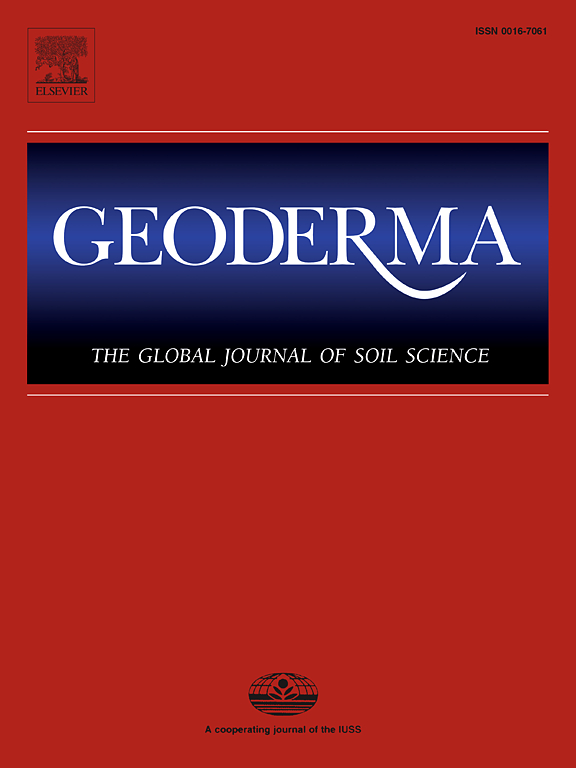Tillage and residue management modulate the links between soil physical signatures and arbuscular mycorrhizal fungal biomarkers
IF 5.6
1区 农林科学
Q1 SOIL SCIENCE
引用次数: 0
Abstract
Conservation practices such as direct sowing and residue incorporation are crucial for enhancing soil health. This study investigated the long-term effects of different tillage practices and crop residue management on soil biological and physical health indices to elucidate their interconnections. The impact of tillage intensity (direct sowing, harrowing, moldboard ploughing) was assessed in combination with residue management (retention or removal) across two soil depths (0–10 and 10–20 cm) and two experimental sites. Measurements included three soil biological indicators—two fatty-acid biomarkers of arbuscular mycorrhizal fungi (AMF) and easily extractable glomalin-related soil protein (EE) − as well as two soil physical indices (water-stable aggregates (WSA), and clay dispersibility), five soil pore characteristics (air permeability, gas diffusivity, tortuosity, total porosity, air-filled porosity, and volumetric water content) and soil organic carbon (SOC). Conservation agriculture practices increased the presence of AMF, while the importance of considering soil depth in AMF biomass measurements was underscored. Harrowing and direct sowing treatments resulted in a vertical stratification of SOC. Residue retention increased SOC levels by 5 % and 15 % at the two sites and only significantly at the latter. Minimal soil disturbance enhanced wet aggregate stability by 14 % on average but negatively affected pore characteristics. AMF played a critical role in soil aggregate stability, evidenced by a strong correlation (r = 0.68 and r = 0.86 in the two sites) between hyphal networks and WSA. The study also demonstrated that direct sowing strengthened the relationship between EE and AMF (r = 0.52 and r = 0.64 for the two sites). In minimally disturbed soils, AMF contributed to a complex pore structure, with this effect being more closely related to EE than to the hyphal network. These findings underscore the significant role of AMF in maintaining soil health under various tillage practices and residue management strategies.
求助全文
约1分钟内获得全文
求助全文
来源期刊

Geoderma
农林科学-土壤科学
CiteScore
11.80
自引率
6.60%
发文量
597
审稿时长
58 days
期刊介绍:
Geoderma - the global journal of soil science - welcomes authors, readers and soil research from all parts of the world, encourages worldwide soil studies, and embraces all aspects of soil science and its associated pedagogy. The journal particularly welcomes interdisciplinary work focusing on dynamic soil processes and functions across space and time.
 求助内容:
求助内容: 应助结果提醒方式:
应助结果提醒方式:


